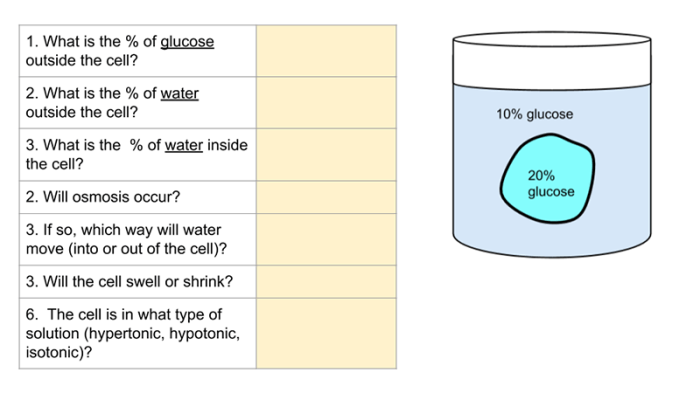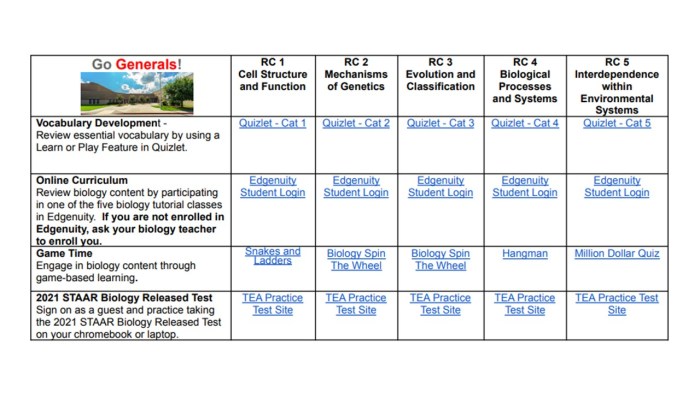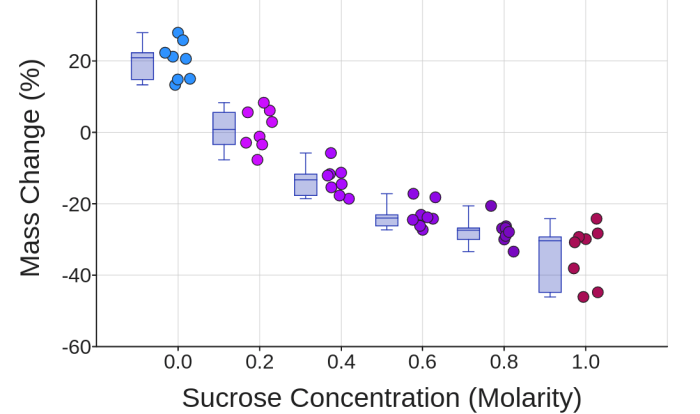Dive into the fascinating world of osmosis with our comprehensive osmosis practice problems answer key. This invaluable resource provides a thorough understanding of osmosis concepts, enabling you to tackle practice problems with confidence and master the intricacies of this fundamental biological process.
Our meticulously crafted answer key offers step-by-step solutions, unraveling the complexities of osmosis and empowering you to grasp the underlying principles that govern the movement of water across semipermeable membranes.
Osmosis Practice Problems: Osmosis Practice Problems Answer Key

Osmosis is the movement of water across a semipermeable membrane from an area of high water concentration to an area of low water concentration. This process is important for many biological processes, such as the uptake of water by plants and the regulation of fluid balance in animals.
There are many different types of osmosis practice problems that can be used to help students understand this concept. Some of the most common types of problems include:
Calculating the rate of osmosis, Osmosis practice problems answer key
The rate of osmosis can be calculated using the following equation:
“`Rate of osmosis = (Area of membrane) x (Water permeability of membrane) x (Concentration gradient)“`
The area of the membrane is the surface area of the membrane that is exposed to the water. The water permeability of the membrane is a measure of how easily water can pass through the membrane. The concentration gradient is the difference in water concentration between the two sides of the membrane.
Predicting the direction of osmosis
The direction of osmosis can be predicted using the following rule:
Water will move from an area of high water concentration to an area of low water concentration.
This rule can be used to predict the direction of osmosis in any system.
Solving osmosis problems
Osmosis problems can be solved using the following steps:
- Identify the two compartments that are separated by the semipermeable membrane.
- Determine the water concentration in each compartment.
- Calculate the concentration gradient.
- Use the concentration gradient to predict the direction of osmosis.
- Calculate the rate of osmosis.
FAQ Section
What is the significance of osmosis in biological systems?
Osmosis plays a crucial role in maintaining cell volume, regulating water balance, and facilitating the transport of nutrients and waste products across cell membranes.
How does the rate of osmosis vary?
The rate of osmosis is influenced by factors such as the concentration gradient of solutes, the permeability of the membrane, temperature, and surface area.
Can you provide examples of osmosis in everyday life?
Osmosis is evident in processes such as the absorption of water by plants, the preservation of food through dehydration, and the functioning of artificial kidneys.


